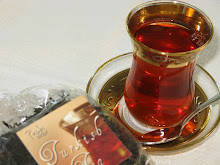
Tony wanted waffles this morning, but that's not what I needed. He fixed his while I prepared mine. Mine included the staples of a traditional Turkish breakfast: five-minute boiled egg, fresh tomato wedges, fresh cucumber, yogurt (Greek since I can't purchase Turkish in this part of the country), whole-grain toast (although Turkish simit would have been perfect), honey, and black tea.
After breakfast we actually treated ourselves to a movie at the cinemaplex (a whopping $13 for two seniors). I wholeheartedly agree with
Time magazine's arts reviewer, Mary Pols, that Meryl "Streep's performance is a hoot and a joy. It's not just a demonstration of tremendous skill; it's emotional persuasion." Streep masters Julia Child's personality,
joie de vivre, and chirpy, high-pitched accent. I've read that Streep thoroughly enjoys the challenges of different accents. Regardless of what the film critics write, I think Nora Ephron gives viewers a splendid screen adaptation of both books.
Julie and Julia is a "feel good" movie--not a "chick flick"--with absolutely nothing offensive in it. Tony and other guys laughed out loud on several occasions, especially at Tucci's performance--definitely believable--as Julia's husband. Although several film critics say they could hardly wait for the camera to pan to Julia after segments focusing on Julie, I think Amy Adams is engaging in her portrayal of a Queens resident who posted daily to her blog as she cooked her way through Child's recipes.
I've seen Julia Child's modest kitchen in the Smithsonian, and it reminds me of my grandmother's. If Julia could see the movie and the museum installation of her kitchen, I think she would say that today's marble countertops and state-of-the-art appliances have little impact upon the quality of food preparation. We should be inspired by her passion and persistence. Yes!
Bon appetit!






